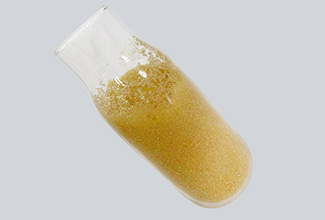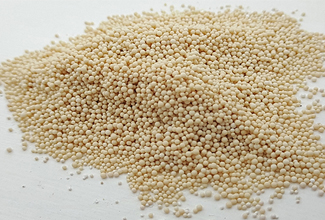What Resin is Used in the Sugar Industry?
Ion exchange resins play an important role in the sugar industry, particularly in the decolorization process. They are synthetic materials that can selectively remove impurities, including colorants, from sugar solutions.
How Ion Exchange Resins Work in Sugar Decolorization
Selective adsorption: The resin contains functional groups that have an affinity for specific molecules. In the case of sugar decolorization, these groups are designed to selectively adsorb colorants, such as melanoidins and caramel, from the sugar solution.
Color removal: As the sugar solution passes through the resin bed, the colorants are retained by the resin while the decolorized sugar solution is collected.
Regeneration: Once the resin is saturated with dyes, it must be regenerated. This is typically done by using a hot caustic solution (sodium hydroxide) to remove the adsorbed dyes. The regenerated resin can then be reused in the decolorization process.
Types of Ion Exchange Resins Used for Sugar Decolorization
Anion exchange resins: These resins are used to remove negatively charged colorants from the sugar solution. They are often used in combination with cation exchange resins.
Cation Exchange Resins: While primarily used for ion exchange in other processes, cation exchange resins can also be used in sugar decolorization, especially when the colorants have a positive charge.
Mixed bed resins: These resins contain both cation and anion exchange groups in a single bed. They can be used to remove both positively and negatively charged contaminants simultaneously.
How Ion Exchange Resins Work in Sugar Decolorization
Selective adsorption: The resin contains functional groups that have an affinity for specific molecules. In the case of sugar decolorization, these groups are designed to selectively adsorb colorants, such as melanoidins and caramel, from the sugar solution.
Color removal: As the sugar solution passes through the resin bed, the colorants are retained by the resin while the decolorized sugar solution is collected.
Regeneration: Once the resin is saturated with dyes, it must be regenerated. This is typically done by using a hot caustic solution (sodium hydroxide) to remove the adsorbed dyes. The regenerated resin can then be reused in the decolorization process.
Types of Ion Exchange Resins Used for Sugar Decolorization
Anion exchange resins: These resins are used to remove negatively charged colorants from the sugar solution. They are often used in combination with cation exchange resins.
Cation Exchange Resins: While primarily used for ion exchange in other processes, cation exchange resins can also be used in sugar decolorization, especially when the colorants have a positive charge.
Mixed bed resins: These resins contain both cation and anion exchange groups in a single bed. They can be used to remove both positively and negatively charged contaminants simultaneously.
Related Products
-
 Strong Acid Cation Exchange Resin for water treatmentAppearance: Claybank to tan transparent spherical particle.The degree of crosslinking : 10%.Ionic form:Na+
Strong Acid Cation Exchange Resin for water treatmentAppearance: Claybank to tan transparent spherical particle.The degree of crosslinking : 10%.Ionic form:Na+ -
 Macroporous Weak Acid Chelating Resin for Cobalt Removal Copper Removal Nickel Removal Zinc Removal ResinEquivalent foreign models: Puromet MTS9301Appearance: Spherical BeadsIonic Form: Na+ form
Macroporous Weak Acid Chelating Resin for Cobalt Removal Copper Removal Nickel Removal Zinc Removal ResinEquivalent foreign models: Puromet MTS9301Appearance: Spherical BeadsIonic Form: Na+ form -
 001X8 water softener ion exchange ResinIonic form:Na+Appearance: Claybank to tan transparent spherical particle.The degree of crosslinking : 8%.
001X8 water softener ion exchange ResinIonic form:Na+Appearance: Claybank to tan transparent spherical particle.The degree of crosslinking : 8%.
Message

